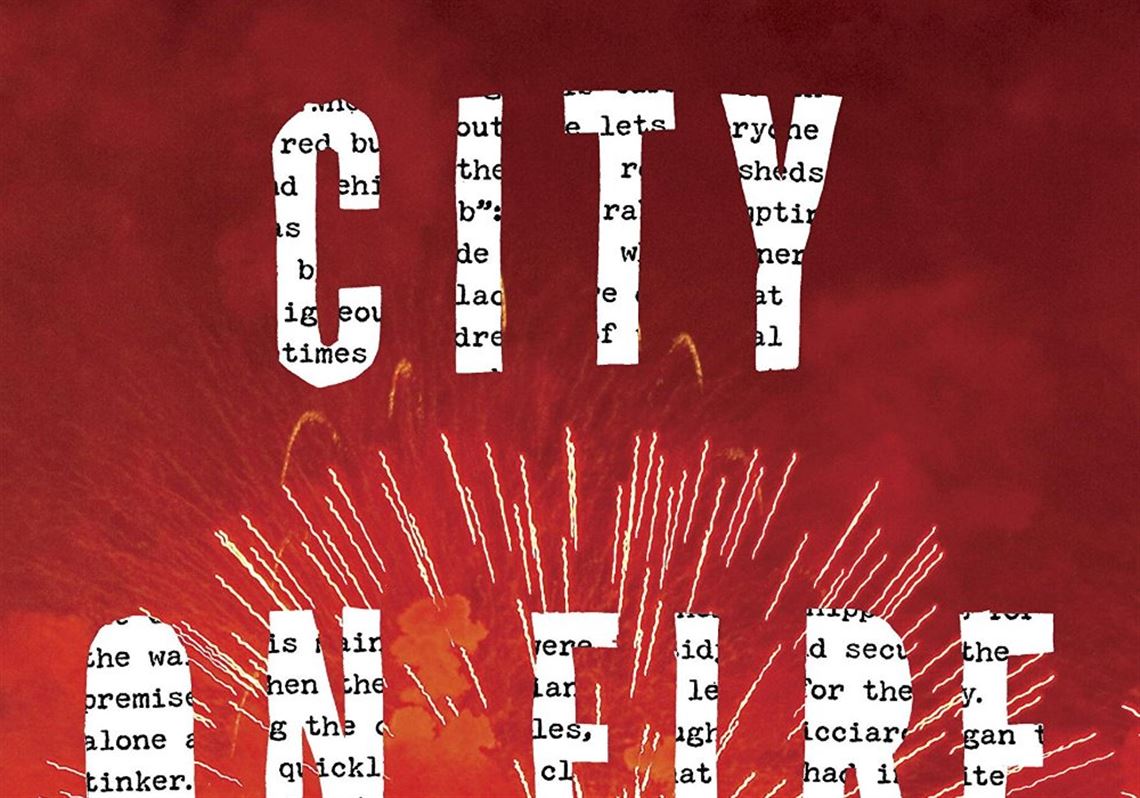New York City in the mid-1970s seemed a lost cause. Times Square was a cesspool. The Son of Sam was terrorizing the boroughs. AIDS was beginning to rear its head. And drugs? Fuhgeddaboudit! Like dominoes falling, municipal bankruptcy loomed and a devastating blackout hit in 1976 and 1977. Could what was once America’s greatest city sink any lower?
It is against this lurid backdrop that Garth Risk Hallberg sets his debut novel, a weave of multiple storylines that humanize and vividly evoke that tumultuous period. “City on Fire” is an extraordinarily ambitious, exhaustively orchestrated portrait of a city of stolen explosives, financial skulduggery, a crippling caste system, punk rock, arson in the Bronx and a building in the East Village hiding God knows what dangers.
“City on Fire” has the scope of a classic Russian novel. I spent a week compulsively reading it, and since finishing, I’ve had a hard time picking up another book. Granted, it does go on (903 pages), and the finale is, one might say, Zen like. If there were a fictional equivalent of the Slow Food movement, “City on Fire” would be its standard bearer.
Alfred Knopf ($30).
The book subdivides mostly into narratives about couples. There’s Charlie and Samantha, suburban teenagers seeking the spark of authenticity in New York’s embryonic downtown punk rock scene. There’s Regan and William Hamilton-Sweeney, uneasy siblings struggling to deal with a problematic family fortune. The spoiled William, a junkie and artist, has an ambivalent lover, Mercer, a would-be novelist and a rural Georgia transplant (and black). There’s detective Larry Pulaski, doggedly trying to solve the mystery that ties the novel together while Richard Groskoph (“big head”) attacks it from a journalist’s standpoint. There are other, minor characters, many with great names, like the androgynous Venus de Nylon and Nicky Chaos (Sid Vicious, anyone?), the talentless bass player in Ex Nihilo, a punk band that casts a long shadow.
The magnet that pulls in everyone is the New Year’s Eve shooting of Samantha in Central Park. Different characters discover/attend to/investigate her, but she remains inert, functioning largely as a symbol of the city’s helplessness. She is a prism, filtering and enhancing the other, more active characters. In Mr. Hallberg’s orchestral hands, they mutate, accrue and interact as he pushes them at each other across his urban chessboard.
Mr. Hallberg also plays with typography, point of view and tense, forcing the reader to think ahead, then settle in as one part of a character sticks to what we’ve learned earlier. Backstory isn’t always conveyed in the present; at times, a character is introduced but not fleshed out until much later. This can be bewildering and enervating. One of the dynamic tensions at work here is that this is a novel to get lost in as well as one that can try one’s patience — but is ultimately rewarding.
Mr. Hallberg, 36, is writing about an era he didn’t experience. He nevertheless occupies his remarkably researched material, evoking that time with effortless authenticity. Like Jonathan Franzen and Michael Chabon, Mr. Hallberg is brilliant at communicating the special energy of Manhattan. Unlike them, however, he paints on a much broader canvas. And the emotions run deep. Here’s a breakup scene between Regan Hamilton-Sweeney and her husband Keith, a well-heeled couple whose arc is one of the most important in the book:
“He had to get out of here, obviously, but looking for a place of his own, even a one-bedroom with a short-term lease, would have meant admitting the separation wasn’t temporary. Then, the week before Christmas, he’d arrived at the old building for his scheduled visit with the kids to find Regan out front, supervising movers as they angled his piano, now hers, into the open maw of a van. She’d gotten her hair cut short, a bob, he thought it was called, like she’d had it when she’d been in ‘Twelfth Night.’ The fact that it could have been short for days now without his knowing it stabbed at him.”
This is one of the smaller pictures Mr. Hallberg paints. But it’s typical in its data load, representing in its sharp, detailed way, his ability to paint a picture as big as the imagination.
Carlo Wolff is a staff reporter for the Cleveland Jewish News.
First Published: October 11, 2015, 4:00 a.m.

















